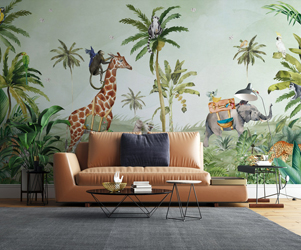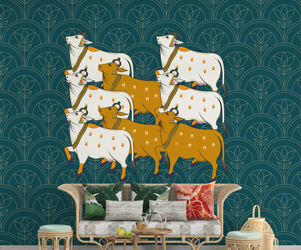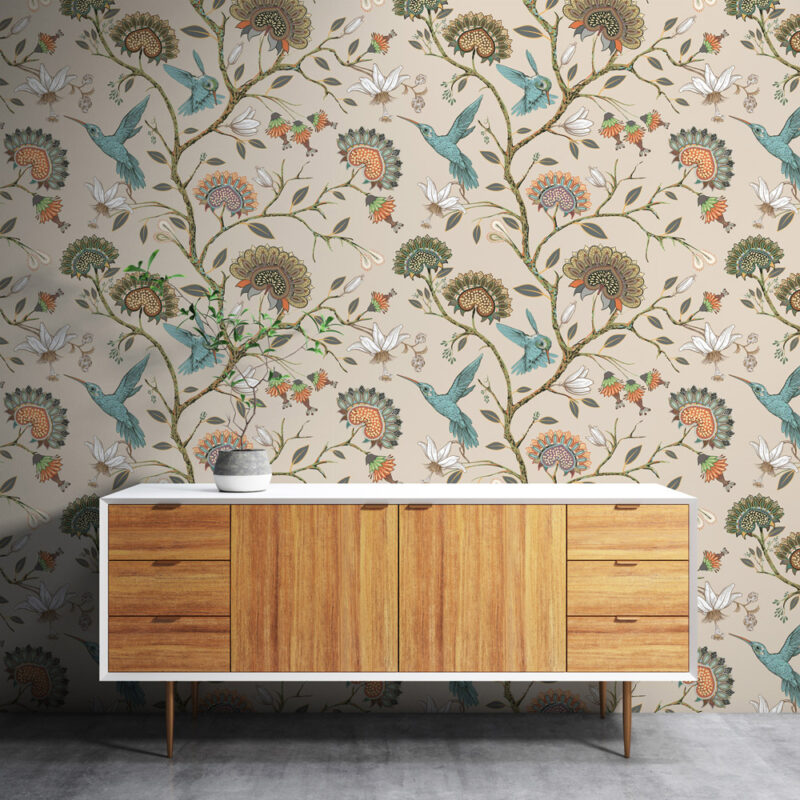Wallpaper serves as an impressive enhancement for your walls and spaces, capable of transforming them into captivating focal points. Despite the dominance of vibrant and trendy designs in the realm of interior design, the significance of wallpaper textures is occasionally overlooked. Yet, the right selection of wallpaper textures can bestow a distinct character upon your home, whether you're renovating an existing space or establishing a new one.
In many instances, individuals opt for wall paints rather than exploring various types of wallpapers during home makeovers. Therefore, we are here to provide you with comprehensive insights into wallpaper textures, materials, and diverse wallpaper options, ensuring that you make well-informed choices.
Strategies for Wallpapering a Compact Room
It's crucial to select colors and designs that genuinely resonate with your preferences. Beyond the fact that you encounter them daily, elements that don't align with your taste can quickly become overwhelming. Consider opting for expansive floral or leafy prints, embracing the room's natural ambiance while mitigating low ceilings. Our team of design experts recommends a blend of pastel shades or textures and wallpaper to create the illusion of spaciousness. Horizontal stripes can impart a sense of expansiveness, while vertical stripes elongate the room and elevate the ceiling. Avoid overly bold, dark hues and intricate patterns, as they tend to induce a sense of confinement.
Deciding Between Paper and Alternative Materials
Paper wallpaper is renowned for concealing imperfections on walls. It boasts low maintenance and hassle-free application and removal, although careful installation is imperative.
Vinyl-coated wallpaper is another favored option, adhering smoothly to walls. Embossed wallpaper presents an excellent choice for camouflaging blemishes. While fabric wallpaper and other materials exude opulence, they demand more upkeep and might have limitations in adhesion.
Appropriate Use of Small-Scale Wallpaper Prints
Small patterns are ideally suited for expansive living rooms, children's bedrooms, spaces adjacent to windows and doors, and areas defined by built-in furniture.
Expanding Small Spaces with Wallpaper
Indeed, employing well-suited wallpapers can visually amplify smaller rooms. As previously mentioned, vertical stripes impart width and height, while horizontal stripes create roominess. Simple geometric motifs or textures that mimic marble can also contribute to a sense of spaciousness. Additionally, a minimalistic repeating pattern in a lighter shade can foster a sense of openness when utilized throughout the room. Diagonal patterns are particularly effective in boxy apartment layouts.
Understanding Pattern Repeat
In instances of vertical and horizontal patterns, it's pivotal to ensure equal spacing and alignment on both sides. Geometric patterns demand more meticulous alignment, while floral and randomly arranged patterns often bear smaller repeats, making them easier to work with.
Dos and Don'ts of Wallpaper Installation
Dos:
- Thorough planning and preparation are essential for successful wallpapering.
- Calculate the required amount of wallpaper and purchase it all at once.
- Ensure all papers are from the same batch to maintain color/pattern consistency.
- Measure and cut the papers, aligning them at the base before applying adhesive.
Don'ts:
- Avoid starting with a large area.
- Refrain from beginning without adequately preparing your walls.
- Choose a wallpaper that aligns with your interior style and aesthetic.
- Steer clear of overly intricate patterns.
- Remember to seek professional advice when needed.
Is Wall Painting Necessary Before Wallpapering? How Long Does Wallpaper Last?
Achieving excellent wallpaper installation necessitates proper wall preparation. If walls lack the strength to hold wallpaper paste, mishaps can occur. Hence, wall preparation is a critical step before wallpaper application.
Wallpapers are remarkably durable and can last up to 15 years.
In conclusion, when selecting wallpaper materials, prioritize their suitability for the room's purpose, longevity, and maintenance ease. Spaces like kitchens, hallways, and children's rooms benefit from water-resistant wallpapers. While you can undertake this process independently, seeking professional guidance can save both time and resources.







